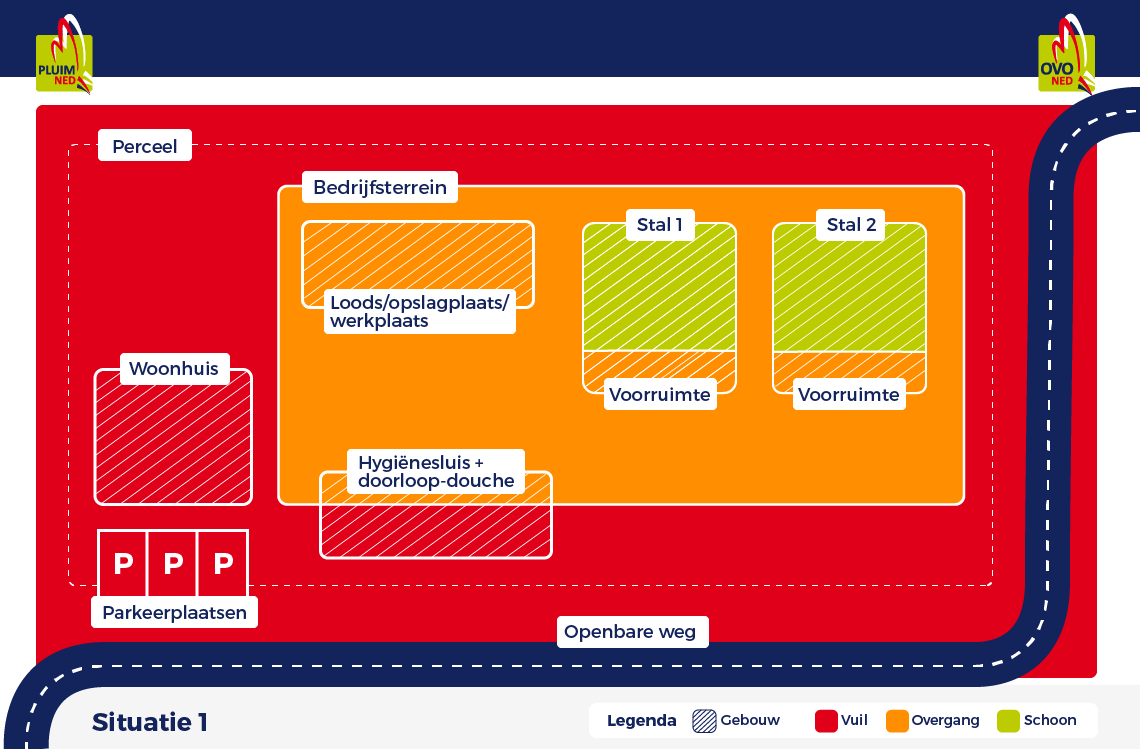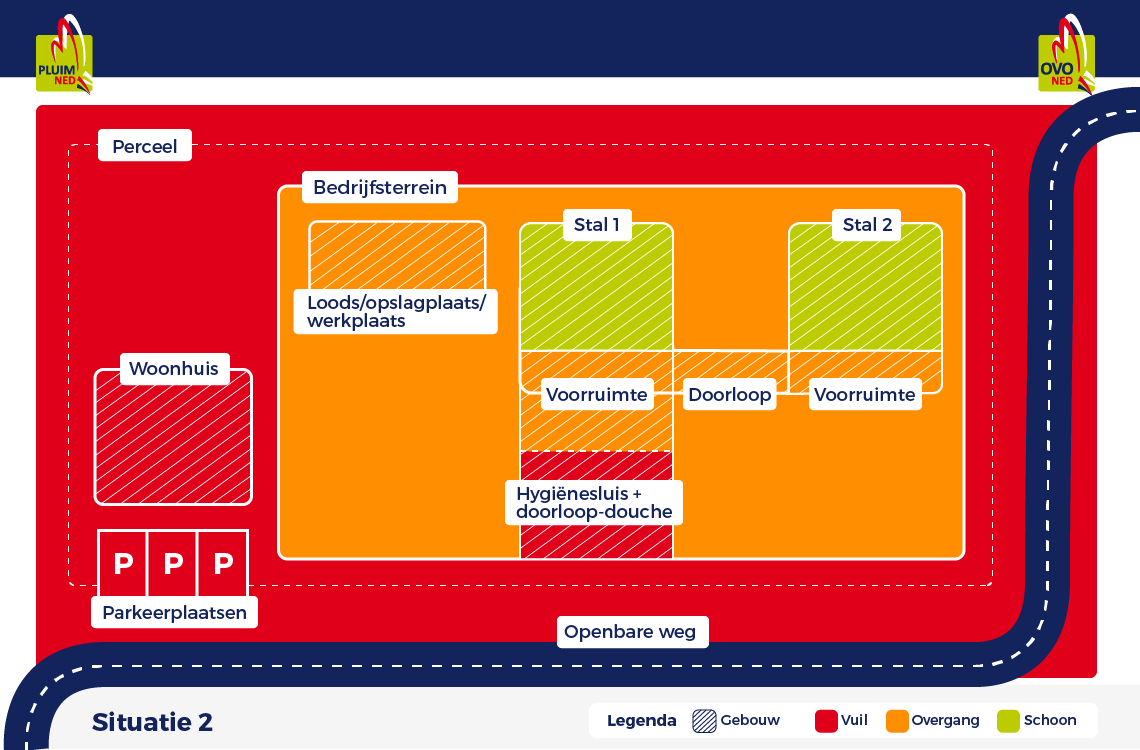The best place to locate the hygiene lock (which includes the shower facility) is where preventing the introduction and spread of animal diseases and infections is most effective, for example, at the entrance to the premises.
A number of tips regarding the location of the hygiene lock are given below:
- Make a floor plan of the farm, showing a clean and unclean route if possible. Include the walking routes taken by visitors, employees, poultry farmer and transporters:
- Use colours to indicate the different hygiene zones. In an ideal situation, the shower is located between the unclean route (red) and the buffer zone (orange);
- Discuss this with other people who are familiar with the situation on your farm, for example the veterinarian or advisers/consultants.
Use colours to indicate which parts of the premises are designated clean/unclean: red, orange and green zone:
- the red zone (unclean zone), for example, is the parking area and the plot up to the entrance to the hygiene lock.
- the orange zone (buffer) contains the hygiene lock, where visitors take a shower and change. This part of the premises extends to the entrance to the buildings that house the animals. The orange zone marks the buffer from the red to the green zone, and the opposite.
- The green zone (clean zone) contains the buildings that house the animals. This zone is separated from the red zone and can only be entered via the hygiene lock situated in the orange zone.
We have provided two examples of diagrams of farms showing the coloured zones.
In situation 1 the hygiene lock is located at the edge of the premises. The premises have to be crossed to reach the barns. It is important to change out of the clothing and footwear provided on site into the special clothing and footwear to be worn in the barn in the anteroom to the barn.

In situation 2 the hygiene lock with walk-through shower is located in one of the barns. If the other barn is visited, in the ideal situation, a walkway built between both (or more) barns can be used. If no use can be made of such a walkway, the visitors must cross the premises to access the other barn(s). In this situation too, it is important to change into the special clothing and footwear to be worn in the barn in the anteroom to the barn.

The hygiene protocol of IKB Kip and the visual depiction of this protocol describe what a visitor must do before entering the premises.